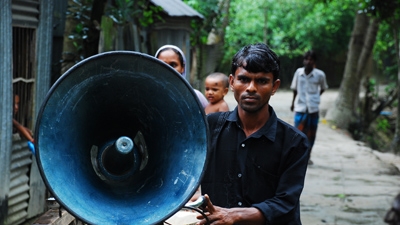Working with a number of partners, including governments, international and technical organizations, private sector and civil society, GFDRR achieved a number of tangible results during the fiscal year:
- Ten Caribbean countries are now able to share disaster risk data online as a result of GFDRR training.
- In Indonesia, 180 schools have been earthquake-proofed according to international standards.
- After a devastating flood in 2008, 65,000 homes and 70 bridges in India’s Bihar state are being rebuilt according to more disaster-resilient designs.
- A flood and earthquake risk assessment for Manila, conducted by GFDRR, led the Philippines government to endorse and invest in a $9 billion flood risk reduction plan.
- In Nepal, GFDRR technical and financial support is enabling the government to create a modern hydrometeorological system and establish an early warning system for floods, droughts, and landslides.
GFDRR has also been investing in a new monitoring and evaluation framework, as called for by a recently adopted strategy and work plan, to better measure results and development impact of this work.
“The stakes have never been higher,” said Francis Ghesquiere, head of the GFDRR Secretariat. “Rapid urbanization and increased climate variability are exacerbating disaster risk in vulnerable countries. GFDRR is working to make communities more resilient and better able to face such challenges.”
Through GFDRR, the World Bank aims to mainstream disaster risk management and recovery into country development plans and polices through the operations of major multilateral organizations. Last year, 85 percent of the World Bank’s Country Assistance and Country Partnership Strategies incorporated disaster and climate risk analysis, a substantial increase from 44 percent during the mid-2000s.
Recently, the International Development Association (IDA) – the World Bank’s fund for the poorest – committed to screening all country strategies and operations for climate and disaster risks. GFDRR also helped organize the Sendai Dialogue during the World Bank and the International Monetary Fund’s (IMF) 2012 Annual Meetings, highlighting the newest advances in disaster risk management.
GFDRR provides assistance across five areas: risk identification; risk reduction; disaster preparedness; financial protection for countries and people; and resilient recovery when disaster does strike. In the past year, over 80 countries received GFDRR assistance in the form of financial or advisory support.
While GFDRR’s grants are relatively small, they often bring about major investments in disaster risk management projects and infrastructure by governments and international organizations like the World Bank. For example, GFDRR supported initiatives in forecasting and monitoring weather, and climate-related hazards in half a dozen low-income countries resulted in an additional $129.7 million worth of investments by development partners last year alone. After Nigeria was hit by severe flooding in November 2012, a GFDRR post-disaster needs assessment served as the basis of a $500 million IDA initiative to address flood risk in that country.
Looking ahead, GFDRR will continue to gather, share, and support innovative solutions in the field of disaster risk management, while ensuring that disaster risk reduction and recovery is included in any major global agreements on poverty and development. The Facility will also strengthen its partnerships with civil society organizations and make sure women play a critical role both on the ground and at the policy level, since empowering women is key to building societal resilience to disaster.


